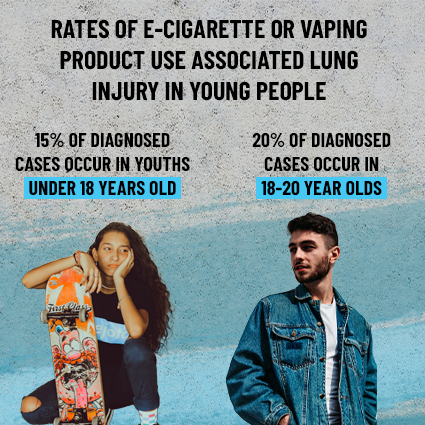Vaping is often advertised as being a healthier alternative for smoking, but there are actually no studies that prove vaping cannabis is any safer than smoking. In fact, it is just as harmful, if not even more harmful than traditional forms of smoking cannabis.
Vaping products for cannabis tend to use high-potency concentrates, containing anywhere from 50-90% THC, compared to cannabis leaf products that usually contain only around 15% THC on average.
High concentrations of THC have been linked to higher incidences of mental and physical health problems, “and may lead to a higher risk of developing … paranoia, psychosis, and cannabis hyperemesis syndrome.”

So, why is vaping viewed as safer? Vaping is thought to be safer for cannabis and tobacco use because it doesn’t produce many of the harmful components of burning material such as tar and other cancer-causing agents. But, vaping products can contain carcinogenic (cancer-causing) chemicals – while the long-term effects of these substances are unknown, this should still be a big concern for those who vape. Research also shows that vaping delivers greater amounts of THC, the primary intoxicant in cannabis, which increases the likelihood of adverse reactions.
Vape products, especially those bought on the black market, are also linked with a condition called EVALI (E-cigarette, or Vaping Product, Use Associated Lung Injury). The symptoms of EVALI can include cough, chest pain, shortness of breath, abdominal pain, nausea, vomiting, diarrhea, fever, chills, and weight loss. “EVALI often affects adolescents and young adults with approximately 15% of cases diagnosed in youths under the age of 18 and 20% in youths ages 18 to 20 years.”
Those who vape are also more likely to get sick – being 5-7 times more likely to test positive for COVID-19.
The safest option is stopping or reducing use. If you need support or resources to stop use, check out our substance use treatment resources.
